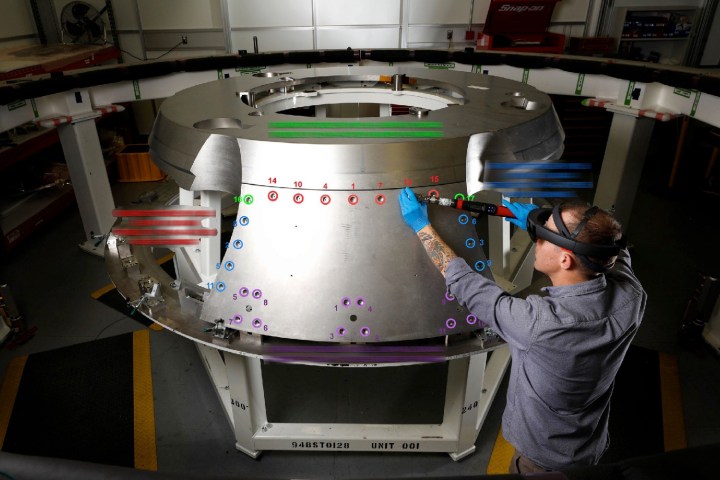
As a global aerospace, defense, and security giant, it’s no great surprise to hear that Lockheed Martin has some pretty advanced technologies at its disposal. For its current project building NASA’s Orion spacecraft, however, Lockheed is turning to some smart tech that’s actually available to regular consumers: Microsoft’s mixed reality Hololens smartglasses.
The Orion Multi-Purpose Crew Vehicle is an American-European interplanetary spacecraft that may eventually carry a crew of four astronauts as far afield as Mars. Announced in May 2011, the Orion MPCV is currently being constructed by Lockheed Martin at the Michoud Assembly Facility in New Orleans. According to a report by the MIT Technology Review, the Lockheed team working on it is doing so using the Hololens to replace a 1,500-page binder of written work instructions. This enables the technicians to learn tasks or check directions in a way that overlays the information on top of the real world, therefore being less likely to disrupt their work.
Using the headset, the works on the Orion project see holograms displaying models created using engineering design software made by Scope AR. These models display the necessary parts and labels, complete with information such as correct torquing techniques and more. Parts are color-coded according to the role of the person wearing the headset. The Hololens also allows the technicians to see what the project will look like when it is fully completed.
So as to not have to wear the Hololens glasses the whole time, the users supposedly use it to check information in 15-minute increments, as opposed to receiving a constant stream of instructions throughout the day.
Lockheed Martin is not the only aerospace organization to investigate augmented reality to replace the enormous paper manuals they otherwise rely on. Other large firms including Boeing and Airbus have also experimented with the technology. However, neither has reportedly taken the plunge by embracing the technology beyond the simple testing phases. Does that give Lockheed the edge? We’ll get a better idea when we see the quality of the finished Orion MPCV — and then observe how many other firms are keen to follow its example.
Editors' Recommendations
- Check out NASA’s Europa Clipper spacecraft at start of build
- You won’t be taking Microsoft’s HoloLens 3 into the metaverse
- Microsoft and Samsung could team up on new AR headset
- How to watch NASA launch its DART anti-asteroid spacecraft tonight
- NASA eyes weather for SpaceX’s Crew-3 launch. Here’s how it’s looking


